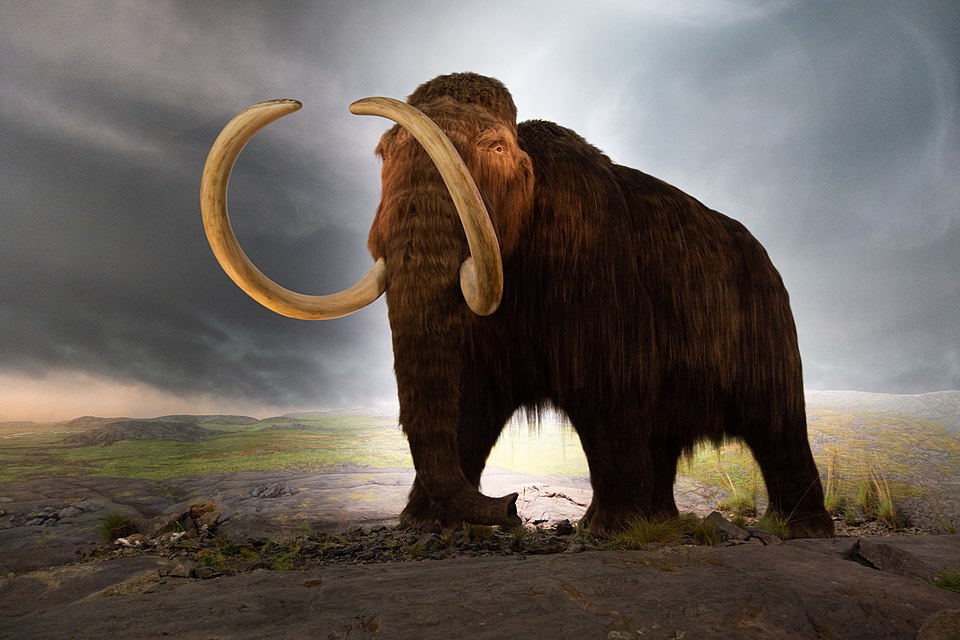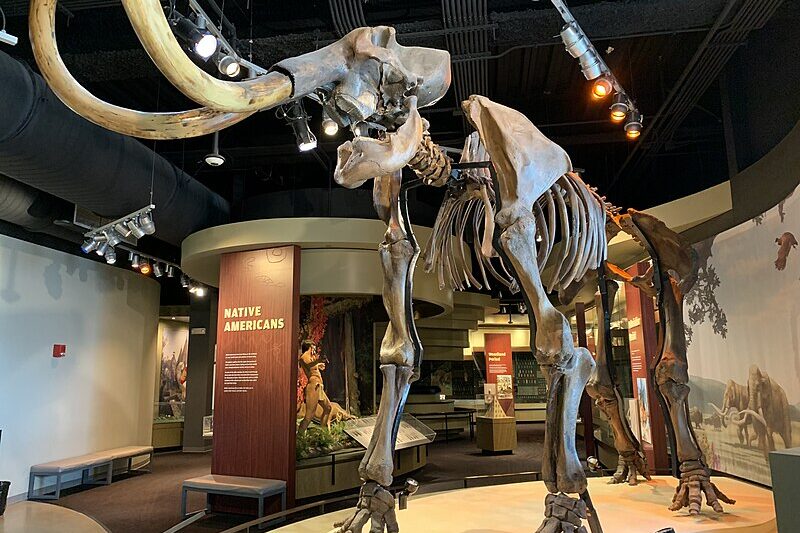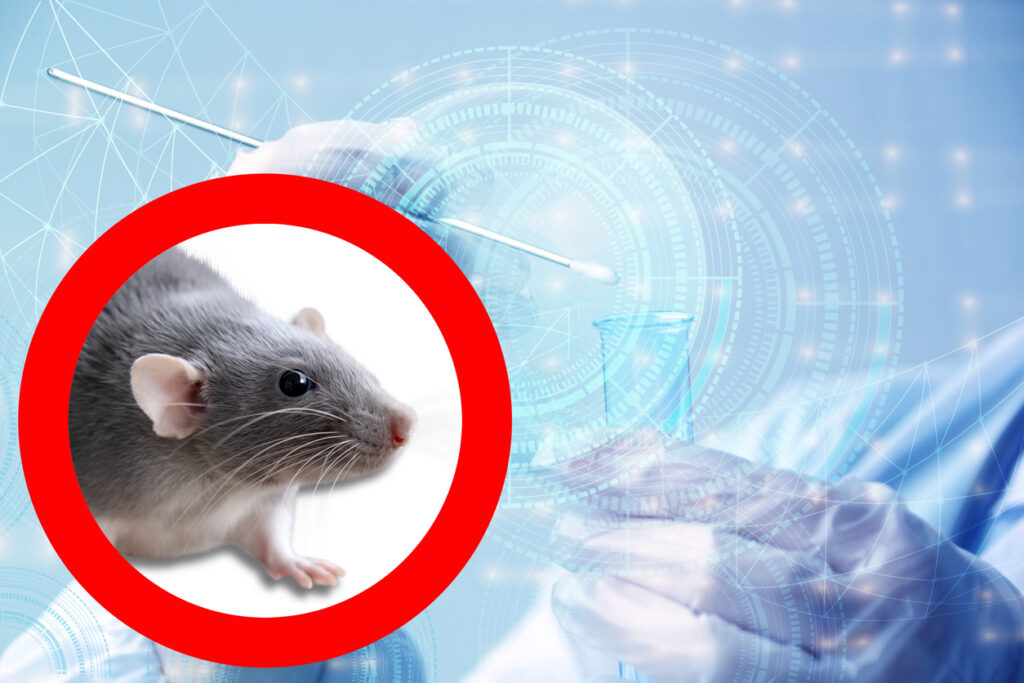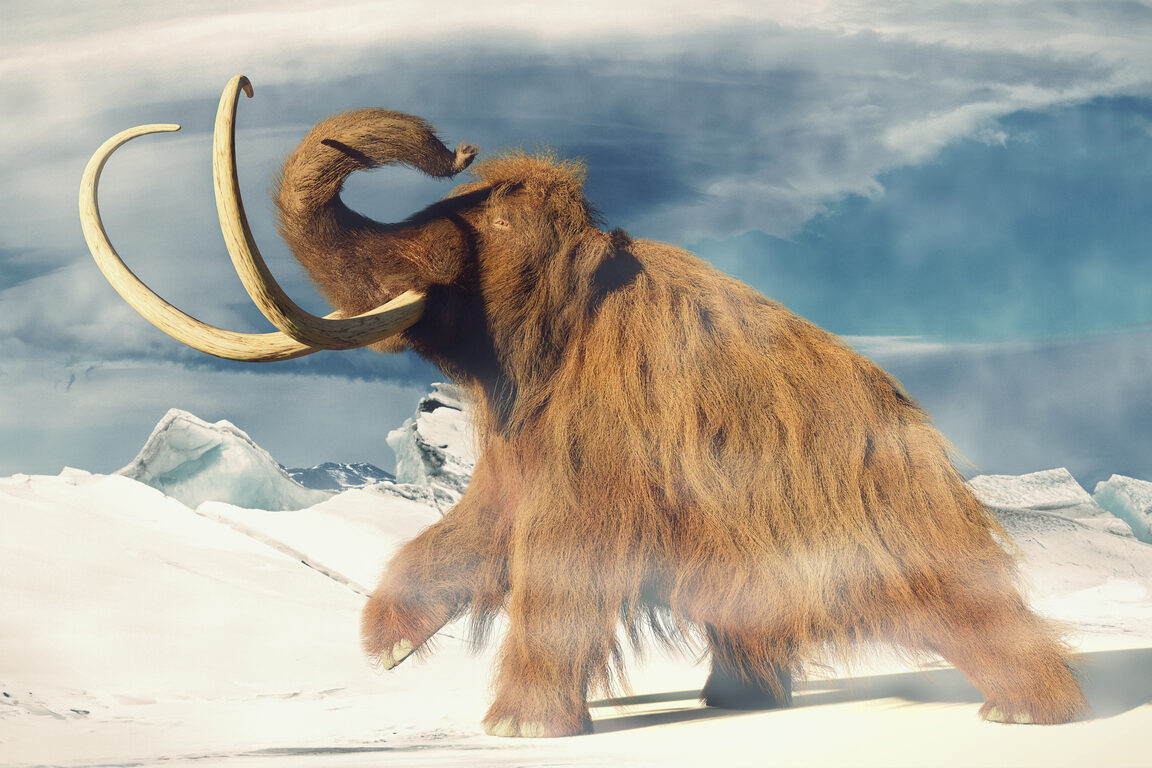1. A Tiny Paw Print, A Giant Leap: How Lab-Grown “Woolly Mice” Spark Curiosity

Imagine holding a small, furry creature that embodies a piece of ancient history. These “woolly mice,” created in a laboratory, are not just a scientific novelty; they represent a potential bridge to understanding and perhaps even reviving extinct species. Scientists are exploring ways to manipulate genes that were once present in woolly mammoths, and these mice are serving as a vital testing ground. Researchers are focusing on the genes responsible for the characteristic thick fur and cold tolerance found in mammoths. The process involves precise gene editing techniques, where specific genes from the mammoth are inserted into the mouse genome.
Experts in paleogenetics emphasize the importance of understanding the ecological implications of bringing back extinct species. They highlight the complexities of reintroducing a large herbivore like the woolly mammoth into modern ecosystems. The potential impact on existing flora and fauna is a significant concern. The ethical considerations surrounding de-extinction are also a central topic of discussion. Scientists are debating the moral implications of altering the natural course of evolution. Questions about animal welfare and the potential for unintended consequences are being raised.
2. From Lab to Landscape: The Potential and Peril of Mammoth Revival

The idea of woolly mammoths roaming the earth once again sparks a sense of wonder and possibility. The creation of woolly mice is a crucial step in exploring this concept. Researchers are working to understand the genetic mechanisms that allowed mammoths to thrive in frigid environments. They are particularly interested in the genes that control fat storage, hair growth, and cold resistance. This research is not just about bringing back a long-gone species; it’s about understanding how organisms adapt to extreme conditions. The insights gained from these studies could have applications in fields like medicine and agriculture. For example, understanding how mammoths stored fat could lead to new treatments for obesity.
The possibility of reviving woolly mammoths raises complex questions about conservation and environmental stewardship. Experts in ecology and climate science are examining the potential impact of reintroducing mammoths into Arctic ecosystems. They are considering factors like habitat availability, food sources, and the potential for disease transmission. The role of mammoths in shaping the landscape through grazing and trampling is also being investigated. Some scientists believe that mammoths could help restore degraded permafrost ecosystems, which are crucial for storing carbon. However, others express concerns about the potential for unintended consequences, such as the spread of invasive species or the disruption of existing ecological balances.
3. A Genetic Puzzle: Unraveling the Secrets of Mammoth DNA Through Mice

The creation of “woolly mice” is a fascinating venture into the world of paleogenetics. Scientists are meticulously studying the DNA of woolly mammoths, piecing together fragments of genetic code that have been preserved for thousands of years. This intricate process involves extracting DNA from frozen remains, often found in the Siberian permafrost. Researchers are then using advanced sequencing techniques to reconstruct the mammoth’s genome. The goal is to identify the specific genes that contributed to the mammoth’s unique characteristics, such as its thick fur, large size, and cold tolerance. These genes are then introduced into the mouse genome, allowing scientists to observe their function in a living organism.
The study of woolly mammoth DNA also raises questions about the definition of species and the boundaries of genetic engineering. Experts in evolutionary biology are debating the ethical implications of creating hybrid animals that contain genes from extinct species. The potential for unintended consequences, such as the creation of new diseases or the disruption of ecosystems, is a major concern. The long-term effects of introducing genetically modified animals into the environment are also unknown. Scientists are emphasizing the need for careful consideration and responsible research practices. The creation of woolly mice is a step-by-step process that allows researchers to assess the potential risks and benefits of de-extinction.
4. The Future of De-extinction: Woolly Mice as a Window to the Past and Beyond

The emergence of “woolly mice” in the lab is more than just a scientific achievement; it’s a glimpse into the future of de-extinction. Researchers are using these mice to explore the possibilities and limitations of bringing back extinct species. The process involves identifying and manipulating the genes that made woolly mammoths unique. This requires a deep understanding of genetics, evolutionary biology, and ecology. The woolly mice serve as a living laboratory, allowing scientists to observe how mammoth genes function in a modern organism. This research is not only about reviving extinct species but also about understanding the fundamental principles of life. The insights gained from these studies could have applications in fields like medicine, agriculture, and conservation.
The potential for de-extinction raises complex questions about our relationship with nature and our responsibility to the planet. Experts in ethics and philosophy are debating the moral implications of bringing back extinct species. They are considering the potential impact on ecosystems, the welfare of the animals involved, and the long-term consequences of altering the course of evolution. The discussion surrounding woolly mice is a reminder that scientific advancements often come with ethical considerations. The need for transparency, public engagement, and responsible research practices is crucial.
5. The Cold Case of Mammoth Genes: How Mice Are Helping Solve Ancient Mysteries

The study of “woolly mice” is like piecing together a cold case from thousands of years ago. Scientists are acting as detectives, examining the genetic clues left behind by woolly mammoths. The frozen remains of these ancient giants hold the key to understanding their unique adaptations. Researchers are meticulously extracting and analyzing DNA, searching for the genes that allowed mammoths to thrive in frigid environments. The woolly mice are serving as a controlled environment for testing these genetic theories. By introducing specific mammoth genes into the mouse genome, scientists can observe how these genes function and interact with other genes. This research is not just about understanding the past; it’s about unlocking the secrets of adaptation and evolution.
The study of woolly mammoth genes also raises questions about the definition of species and the boundaries of genetic engineering. Experts in evolutionary biology are debating the ethical implications of creating hybrid animals that contain genes from extinct species. The potential for unintended consequences, such as the creation of new diseases or the disruption of ecosystems, is a major concern. The long-term effects of introducing genetically modified animals into the environment are also unknown. Scientists are emphasizing the need for careful consideration and responsible research practices.
6. Arctic Echoes: How Woolly Mice Are Tuning Us into Mammoth Adaptations

The “woolly mice” project is like tuning an old radio, trying to pick up faint signals from the past. Scientists are working to understand the adaptations that allowed woolly mammoths to survive in the harsh Arctic environment. These adaptations are encoded in the mammoth’s DNA, and the woolly mice are serving as a living amplifier. By introducing specific mammoth genes into the mouse genome, researchers can observe how these genes affect the mouse’s physiology and behavior. This research is not just about replicating the past; it’s about understanding the fundamental principles of adaptation. The insights gained from these studies could have applications in fields like medicine and environmental science. For example, understanding how mammoths stored fat could lead to new treatments for metabolic disorders.
The study of woolly mammoth adaptations also raises questions about the ethical implications of manipulating genes and altering the course of evolution. Experts in ethics and philosophy are debating the moral responsibilities of scientists and the potential consequences of de-extinction. The long-term effects of introducing genetically modified animals into the environment are also unknown. Scientists are emphasizing the need for careful consideration and responsible research practices. The creation of woolly mice is a step-by-step process that allows researchers to assess the potential risks and benefits of de-extinction.
7. Rewriting the Past: How Woolly Mice Are Helping Us Understand Mammoth Biology

The creation of “woolly mice” is like rewriting a chapter of history, using genetic code as the ink. Scientists are working to understand the biology of woolly mammoths, piecing together information from ancient DNA. The woolly mice are serving as a living textbook, allowing researchers to study how mammoth genes function in a modern organism. By introducing specific mammoth genes into the mouse genome, scientists can observe how these genes affect the mouse’s physiology, behavior, and development. This research is not just about recreating the past; it’s about understanding the fundamental principles of biology. The insights gained from these studies could have applications in fields like medicine and agriculture.
The study of woolly mammoth biology also raises questions about the ethical implications of manipulating genes and altering the course of evolution. Experts in ethics and philosophy are debating the moral responsibilities of scientists and the potential consequences of de-extinction. The long-term effects of introducing genetically modified animals into the environment are also unknown. Scientists are emphasizing the need for careful consideration and responsible research practices. The creation of woolly mice is a step-by-step process that allows researchers to assess the potential risks and benefits of de-extinction. The data gathered from these studies will be crucial in informing future decisions about genetic engineering and conservation.
8. Reconstruction, Frozen Time Capsules: Woolly Mice and the Legacy of the Mammoth

“Woolly mice” are like frozen time capsules, carrying genetic information from the woolly mammoth. Scientists are using these mice to explore the legacy of these ancient giants, understanding how their genes shaped their unique characteristics. The woolly mice serve as a living archive, allowing researchers to study how mammoth genes function in a modern organism. By introducing specific mammoth genes into the mouse genome, scientists can observe how these genes affect the mouse’s physiology, behavior, and adaptation. This research is not just about replicating the past; it’s about understanding the fundamental principles of genetics and evolution. The insights gained from these studies could have applications in fields like medicine and environmental science.
The study of woolly mammoth legacy also raises questions about the ethical implications of manipulating genes and altering the course of evolution. Experts in ethics and philosophy are debating the moral responsibilities of scientists and the potential consequences of de-extinction. The long-term effects of introducing genetically modified animals into the environment are also unknown. Scientists are emphasizing the need for careful consideration and responsible research practices. The creation of woolly mice is a step-by-step process that allows researchers to assess the potential risks and benefits of de-extinction. The data gathered from these studies will be crucial in informing future decisions about genetic engineering and conservation.
9. Echoes of Extinction: Woolly Mice as a Genetic Bridge to the Past

The creation of woolly mice in the lab is not just a scientific milestone—it’s a poignant reminder of the species we’ve lost. These tiny creatures, with their thick fur and cold-adapted traits, are a living link to the past, offering a glimpse into the world of extinct giants like the woolly mammoth. Scientists have carefully engineered them to carry genetic markers reminiscent of their ancient ancestors, making them a crucial step in the journey toward de-extinction. The woolly mice are more than just an experiment; they are a symbol of humanity’s attempt to reconcile with the irreversible losses caused by extinction.
This breakthrough has sparked a renewed interest in the study of ancient DNA and the possibilities it holds. By examining the genetic makeup of woolly mice, researchers can better understand the evolutionary adaptations that allowed species to thrive in extreme environments. It’s a humbling reminder of the intricate web of life and the delicate balance that sustains it. The woolly mice, though small, carry the weight of history on their shoulders, serving as a bridge between the past and the future. They remind us that while extinction may be a natural process, the power to reverse it—or at least learn from it—lies within our grasp.
10. The Ethical Tapestry: Weaving Morality into Genetic Revival

The creation of woolly mice has sparked a profound ethical debate among scientists and ethicists alike. While the scientific community marvels at the possibility of resurrecting extinct species, questions about the moral implications of such endeavors linger. Experts argue that while the technology is groundbreaking, it raises concerns about playing “creator” and the potential consequences of reintroducing species into ecosystems that have evolved without them. Just like the depiction of Dragon in Asian movies, the woolly mice, with their tiny bodies and symbolic significance, serve as a reminder that every scientific leap must be accompanied by a thoughtful examination of its ethical fabric.
Beyond the lab, the conversation extends to the public, where opinions are divided. Some view this as a chance to right the wrongs of human-driven extinction, while others fear the unintended consequences of meddling with nature. The woolly mice, though small, carry the weight of these debates on their shoulders. They are not just a scientific achievement but a catalyst for a broader discussion about humanity’s role in shaping the future of life on Earth. As we move forward, the ethical tapestry woven around these creatures will undoubtedly influence the path of genetic revival.
11. A Glimpse into the Ice Age: Woolly Mice as Living Time Capsules

Imagine holding a woolly mouse in your hand and feeling the echoes of the Ice Age. These tiny creatures, with their thick fur and cold-adapted traits, are more than just lab experiments—they are living time capsules. Scientists have meticulously engineered them to resemble their ancient ancestors, offering a tangible connection to a world long gone. The woolly mice serve as a bridge between the past and the present, allowing us to study the biology of extinct species in a way that was once unimaginable.
This breakthrough has opened doors to understanding how ancient creatures survived in harsh environments. By studying the woolly mice, researchers can gain insights into the genetic adaptations that allowed species like the woolly mammoth to thrive in the Ice Age. It’s a humbling reminder of the resilience of life and the intricate ways in which evolution shapes organisms. The woolly mice, though small, carry the legacy of giants, offering us a glimpse into a world that once was and, perhaps, a world that could be again.
12. The Climate Connection: Woolly Mice and the Fight Against Global Warming

Could woolly mice hold the key to combating climate change? Some scientists believe that resurrecting cold-adapted species like the woolly mammoth could help restore ecosystems and mitigate the effects of global warming. The woolly mice, with their genetic similarities to these ancient giants, are a stepping stone in this ambitious endeavor. By studying how these mice adapt to cold environments, researchers can better understand the potential impact of reintroducing larger species to Arctic regions.
The idea is not without its challenges, but the potential benefits are immense. Restoring ecosystems with species that once roamed the Earth could help stabilize permafrost and reduce greenhouse gas emissions. The woolly mice, though small in stature, represent a bold vision for the future—one where science and nature work hand in hand to address one of the greatest threats facing our planet. As we continue to explore this possibility, the woolly mice remind us that even the smallest creatures can play a role in shaping the future of our world.
Beyond their scientific significance, the woolly mice have become cultural icons, appearing in art, literature, and even popular media. They represent the intersection of science and storytelling, where fact and fiction blend to create a narrative that resonates with people of all ages. The woolly mice are more than just a lab experiment—they are a testament to the power of science to inspire, challenge, and unite us. As we continue to explore the possibilities of genetic revival, the woolly mice will remain a symbol of the wonder and potential of human innovation.


